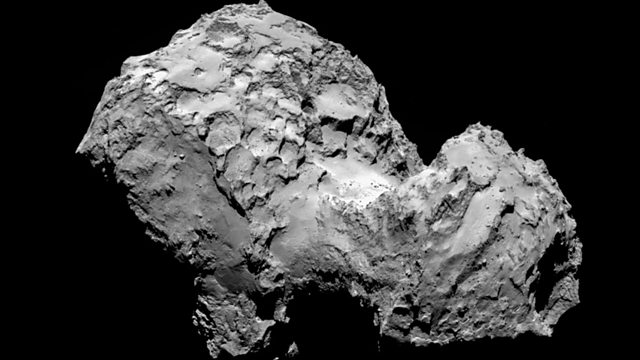Rosetta Rendezvous
Rosetta Rendezvous; Ganges - Brahmaputra Delta Water Rising; Ethiopian Volcanoes; Flying Cars
It's taken took ten years, five months, and four days, but it was all worth it this week, when, in a first for space history, the Rosetta probe arrived at comet 67P. The European Space Agency mission is now in orbit around the comet, 550 million kilometres from Earth - the messages it is sending back are taking over twenty minutes. The mission has the grand goal of adding to our knowledge about comets, and the role they played in carrying the building blocks of life around our solar system. ÃÛÑ¿´«Ã½ Science Reporter Rebecca Morelle watched events unfold for Science in Action.
Ganges - Brahmaputra Delta Water Rising
We have reported before on the dam building projects on the Brahmaputra River, in north-east India, and how they are being blamed for fluctuating water levels. Now, human construction is also being implicated in sea level rise at the base of the river, 2,900 kilometres downstream. New work looks at peak water levels in the delta in south-west Bangladesh, and what it shows is alarming. The area, probably home to more than 20 million people - could be uninhabitable in the coming decades. Professor Julian Orford, from Queens University Belfast and Professor Colin Thorne, from Nottingham University discuss the issue.
Ethiopian Volcanoes
A new project is getting underway to study the largely uncharted volcanoes in Ethiopia’s Rift Valley. The area is one of Africa’s most breathtaking locations, with mountains, plains and over 100 volcanoes, about which very little is known. Professor Kathy Whaler from the University of Edinburgh is leading a five-year project to study the area, to better understand previous activity and new eruption hazards.
Flying Cars
Flying cars have long been promised by science fiction, but none of us are using them to commute at the moment. Several companies around the world are working on designs though. A hover bike, jetpack, or car that does not need roads, can have wider uses than getting us to work and back. They are being investigated by emergency services, first responders, and now, humanitarian agencies for their ability to go where other vehicles cannot. Lou Del Bello, SciDev.Net’s multimedia producer, joins us in the Science in Action studio, with more about one futuristic vehicle that could save lives in the most extreme conditions.
(Image: Comet 67P/Churyumov-Gerasimenko is seen in a photo taken by the Rosetta spacecraft with the OSIRIS narrow-angle camera August 3, 2014 in space © ESA/Rosetta/MPS for OSIRIS Team MPS/UPD/LAM/IAA/SSO/INTA/UPM/DASP/IDA via Getty Images)
Presenter: Jack Stewart
Producer: Ania Lichtarowicz
Last on
More episodes
Previous
Chapters
-
Rosetta Rendezvous
The Rosetta probe has arrived at comet 67P and is sending back new data
Duration: 04:57
Ganges - Brahmaputra Delta Water Rising
Water levels are rising on the 2nd biggest delta in the world
Duration: 08:52
Ethiopian Volcanoes
A new project is launched to study volcanoes in the Rift Valley
Duration: 05:07
Flying Cars
Could flying cars be the way to deliver humanitarian aid in the future?
Duration: 06:36
Broadcasts
- Thu 7 Aug 2014 18:32GMTÃÛÑ¿´«Ã½ World Service Online
- Fri 8 Aug 2014 01:32GMTÃÛÑ¿´«Ã½ World Service Online
- Fri 8 Aug 2014 08:32GMTÃÛÑ¿´«Ã½ World Service Online
- Mon 11 Aug 2014 03:32GMTÃÛÑ¿´«Ã½ World Service Online
Podcast
-
![]()
Science In Action
The ÃÛÑ¿´«Ã½ brings you all the week's science news.


